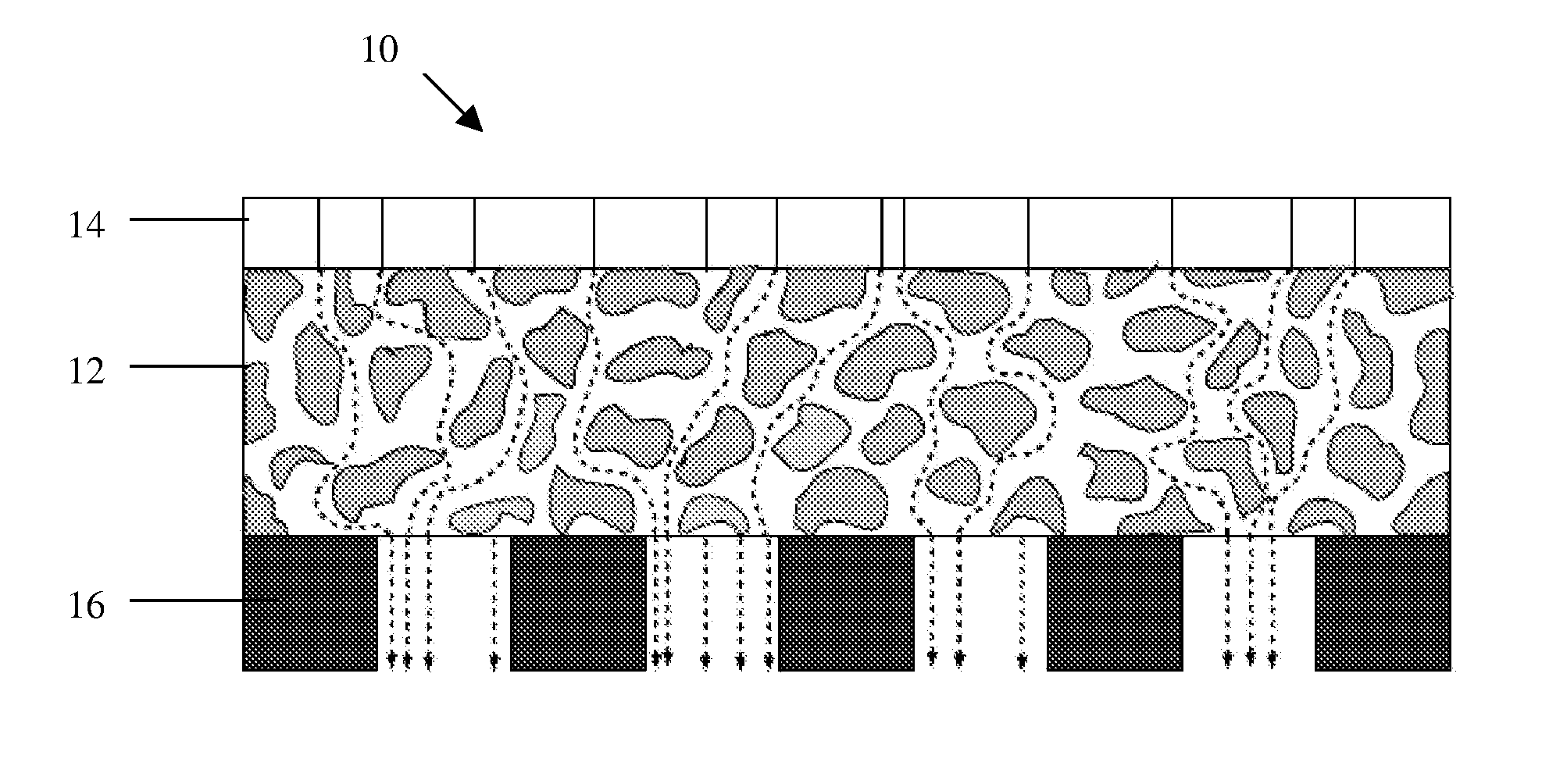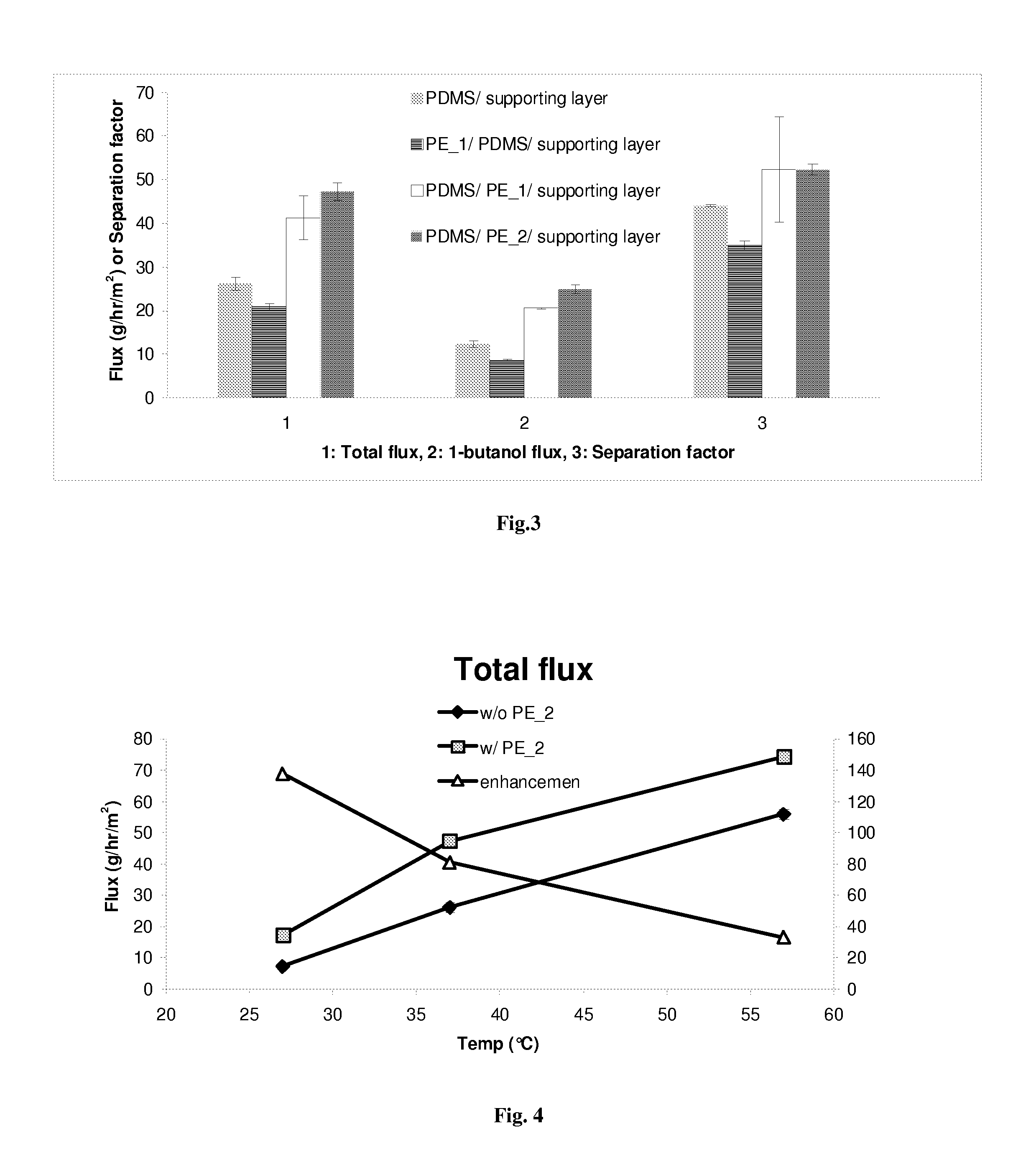Pervaporation composite membrane for aqueous solution separation and methods for using the same
a technology of aqueous solution and composite membrane, which is applied in the direction of filtration separation, separation process, water/sewage treatment by ion exchange, etc., can solve the problems of high capital and energy costs, unreliable petroleum supplies from politically unstable, and the use of petroleum as a basic raw material contributes to environmental degradation, so as to improve the flux and/or separation factor, the effect of reducing the cost of biofuel separation
- Summary
- Abstract
- Description
- Claims
- Application Information
AI Technical Summary
Benefits of technology
Problems solved by technology
Method used
Image
Examples
example 1
[0037]The effects of using the polyethylene layer in combination with the PDMS were determined. Several arrangements were tested. In all of the arrangements, the support layer was a brass layer having a pore size of 508 micrometers and a thickness of 406 micrometers. The PDMS layer (Sylgard® 184 commercially available from Dow Corning) had a thickness of 200 micrometers (the PDMS layer is non porous). The PE layer was either a hydrophilic polyethylene sheet with a pore size of 75 to 110 micrometers and a thickness of 610 micrometers (PE—1; hydrophilic polyethylene commercially available as POR-41210 from Porex Corporation, Fairburn, Ga.) or a hydrophobic polyethylene sheet (that is, absent fillers that render the polyethylene hydrophilic) with a pore size of 35 micrometers and a thickness of 888 micrometers (PE—2; commercially available as POR-4896 from Porex Corporation, Fairburn, Ga.). The arrangements tested, starting from the solution (e.g., feed solution) side to the permeate s...
example 2
[0040]FIGS. 4-6 compare Sample 1 to Sample 4, (wherein “w / ” means with and “w / o” means without). In other words, a membrane with the PE between the PDMS and the support, versus a membrane without the PE between the PDMS and the support. These figures illustrate the unexpected, large, enhancement (e.g., in FIG. 4, enhancement is total flux w PE—2 divided by the total flux w / o PE—2) attained by using the polyethylene layer between the PDMS layer and the support.
[0041]In Table 1, the enhancement percent was determined at different temperatures. The enhancement percent was based upon the results obtained for a membrane with the PE—2 between the PDMS and the support as compared to a membrane without the PE—2 between the PDMS and the support.
TABLE 1Enhancement (%)Temperaturetotalseparation(° C.)fluxbutanol fluxfactor27137.71293.35116.003781.04102.6018.965732.9733.00−2.40
[0042]As is clear from Table 1, at about 35° C.-40° C., greater than 100% enhancement in butanol flux and nearly 19% enh...
PUM
| Property | Measurement | Unit |
|---|---|---|
| pore size | aaaaa | aaaaa |
| pore size | aaaaa | aaaaa |
| thickness | aaaaa | aaaaa |
Abstract
Description
Claims
Application Information
 Login to View More
Login to View More - R&D
- Intellectual Property
- Life Sciences
- Materials
- Tech Scout
- Unparalleled Data Quality
- Higher Quality Content
- 60% Fewer Hallucinations
Browse by: Latest US Patents, China's latest patents, Technical Efficacy Thesaurus, Application Domain, Technology Topic, Popular Technical Reports.
© 2025 PatSnap. All rights reserved.Legal|Privacy policy|Modern Slavery Act Transparency Statement|Sitemap|About US| Contact US: help@patsnap.com



